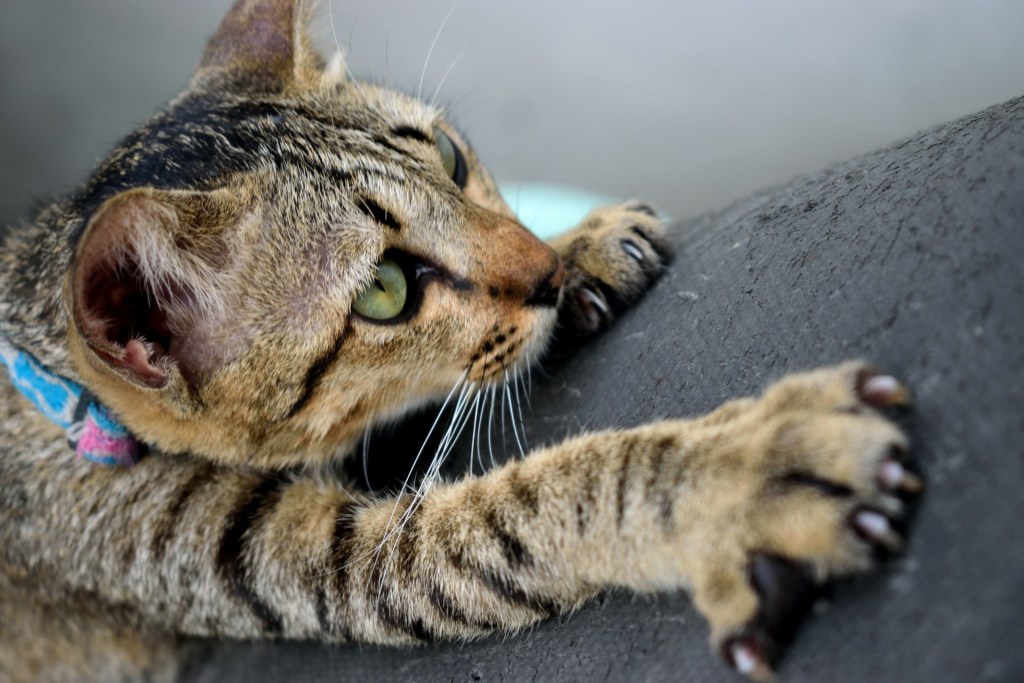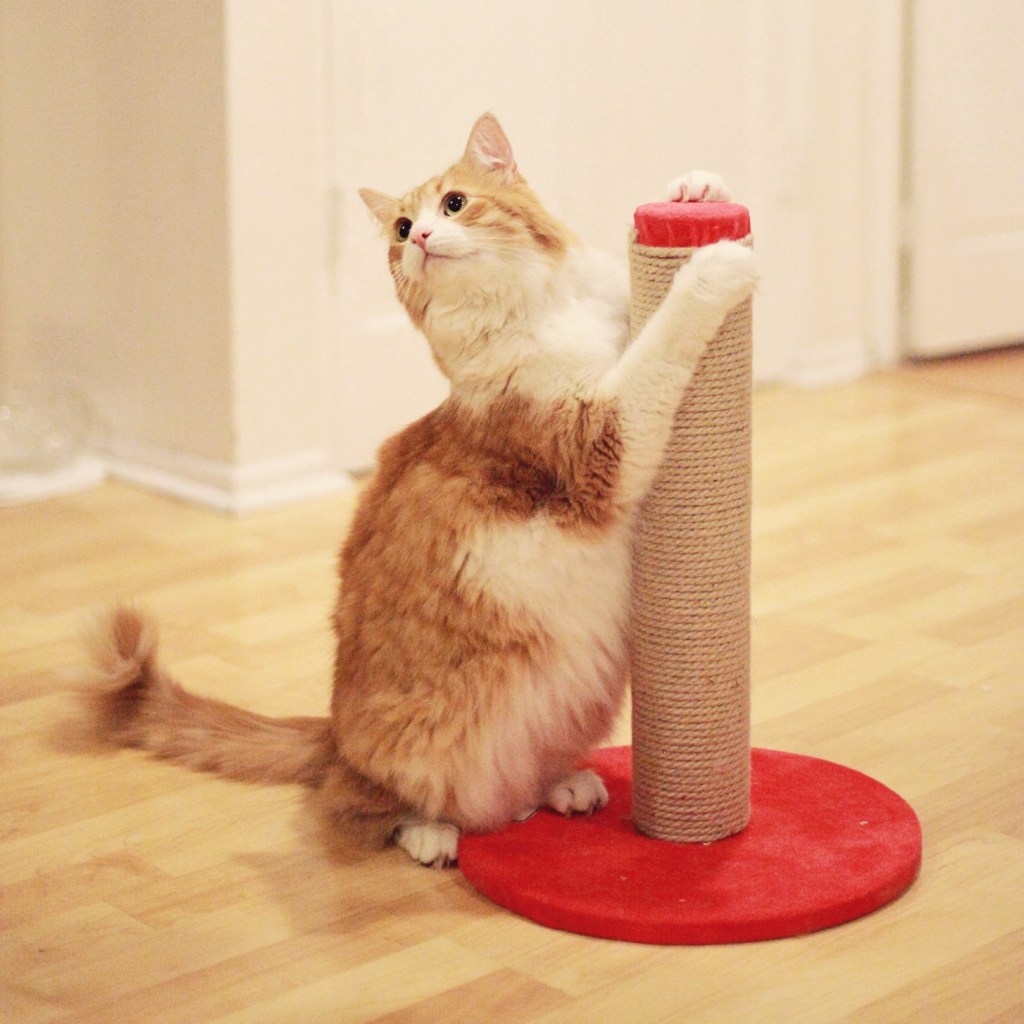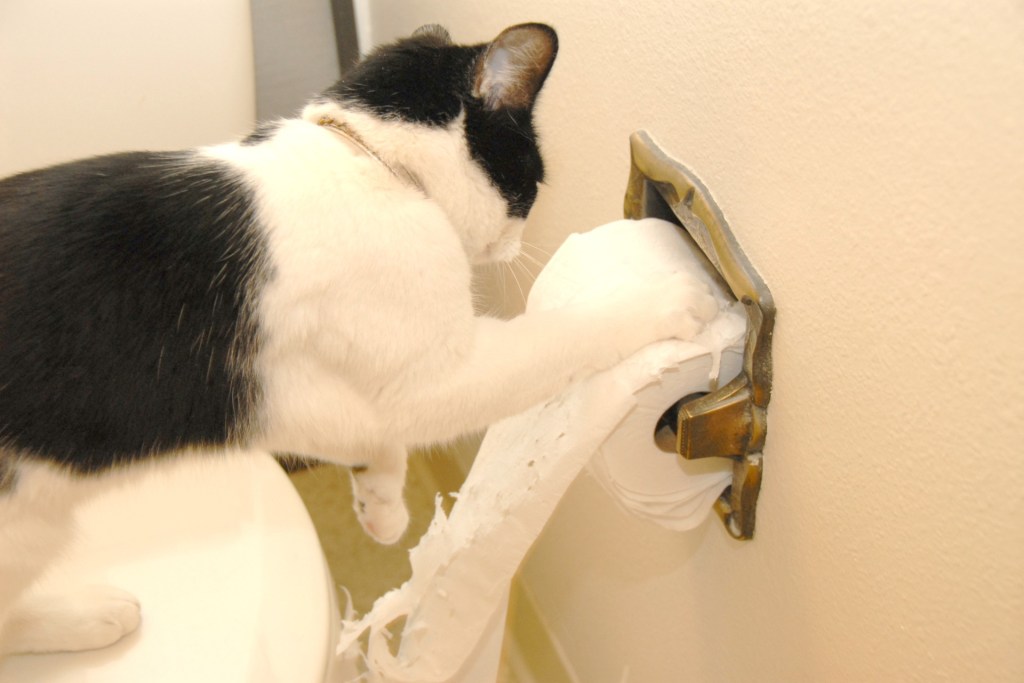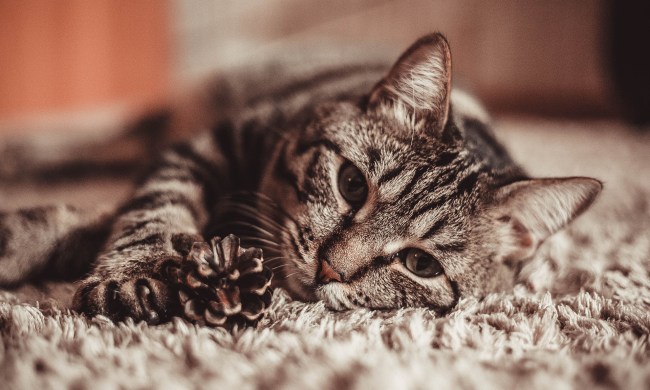Your cat is probably the love of your life, but one thing you don’t love? Scratch marks on all your furniture. If you didn’t know when you got your cat, you probably know now — scratching posts and mats are a lifesaver. So why do these furry felines scratch furniture? What’s with this habit? Is it even possible to stop cats from scratching furniture? It’s time to explore what’s going on in your cat’s head when it’s wrapped up in this curious activity.
Scratching is an essential part of your cat’s life, and it’s essential to understand why. Cats don’t scratch just to annoy you. Scratching has essential physical and mental benefits for your cat, so don’t discourage it. Instead, redirect to something safe for scratching. Here’s what you need to know about this natural activity.

Why do cats need to scratch things?
Scratching is a holdover from the days when cats were completely wild and on their own. This activity has four main reasons behind it, and understanding each one could help you work with your cat’s nature rather than against it.
• To improve their claws. Cats’ claws are a bit like our fingernails. As the claw tips age, they become softer and more brittle, so scratching helps remove dead tissue and reveal shiny, sharper new claw material underneath.
In the wild, cats did this naturally by being outside and doing what cats do. In your house, cats don’t have to climb trees or dig or do anything other than look awesome. That deeply ingrained need to sharpen claws is still there, however, and it expresses itself where it can.
• To mark territory. An indoor cat may not have any need to mark territory, but that doesn’t mean thousands of years of evolution goes out the window. Cats have scent glands in their paws that help other cats identify them. Together with deep, intimidating claw marks, your house cat is telling others to stay away.
This could be more pronounced if you have multiple cats, if your cat is new to your household, or you’ve moved recently. Cats will handle the anxiety in their own way, and for some, that means marking territory.
• To get vital exercise or stretching. If your cat often sleeps next to the arm of your couch, he could have an overwhelming desire to stretch post-nap right on your couch. The arms extend, and so do the claws. Scratches are a byproduct.
If your cat feels the need to move and stretch, scratching may happen. The purpose is the stretch, and the claw marks are just a fun thing that happens along the way to that feel-good stretch.
• Because it’s fun. If your cat is bored and doesn’t get much activity, scratching can help relieve some of that boredom. You may not like it, but your cat could start seeing all your furniture as a potential toy. That energy has to go somewhere, and your favorite chair is it.
In some cases, cats develop preferences for specific materials. If you can’t get your cat to use the scratching post, it could be because the upholstery on your bed frame is a preferable material to the scratching post. Replace the material on your scratching post, and you could have more luck.
How to manage your cat scratching
So your cat is scratching, and you want to do something about it. Here are a few suggestions for how to put a stop to that behavior without interfering with your cat’s well-being.
• Be willing to change. Scratching posts, that is. If your cat has developed a fondness for your carpet, then wrapping a carpet piece around your scratching post or mat could be way more effective than spraying your cat with water every time it won’t go near the scratching post you provided.
Experimenting with different materials, placements, and forms could give you an idea of what your cat likes to do naturally. You may have to accept that you’ll always have a scratching post in your living room, but that’s OK. Working with your cat is going to have better results than punishments.
• Invest time in training. Once you’ve got your cat’s preferences down, you’ll need to cover all other surfaces in something your cat doesn’t like. In some cases, just a layer of tin foil or plastic can do the trick. Place your scratching medium in front of the forbidden surface to entice your cat.
Once your cat is constantly scratching the correct thing, you can gradually move it to your preferred location. Be open to keeping it close by if that doesn’t work. Uncover the forbidden surfaces gradually once your cat has been consistent for a few weeks or months.
• Trim your cat’s nails but never declaw. Declawing is going the way of the dodo and for good reason. It’s an invasive surgery that cripples your cat’s defenses and can cause complications later on in life. To remove claws, your cat must have the first joint of the paw removed, a time consuming and ultimately detrimental surgery.
Your indoor cat may need claws trimmed, however. If you start when they’re young, you can get your cat used to having its paws handled. If your cat won’t allow it, you might speak with your veterinarian about managing it for you under safer conditions.
Embrace your cat’s natural behaviors
Cats use scratching to soothe and maintain physical conditioning. Working with your cat’s natural instincts will always return better results than trying to force your cat to behave against its nature.
Take the time to build good habits and learn about your cat. You may find that through some training and some compromise, you can get back to loving having your cat in your home, and that home is one you both enjoy.




